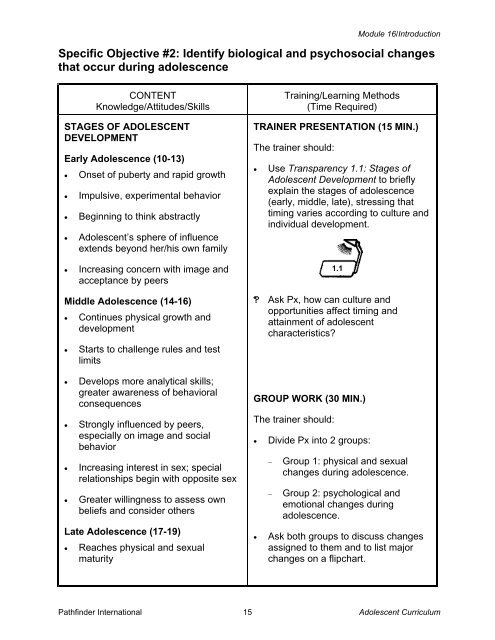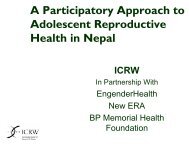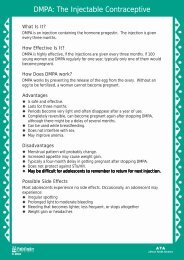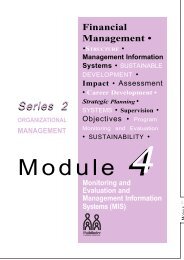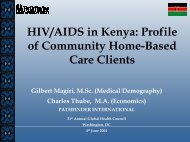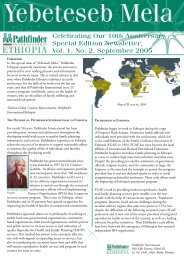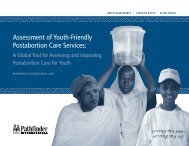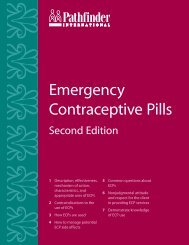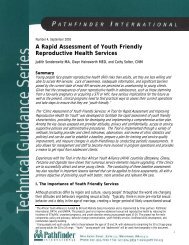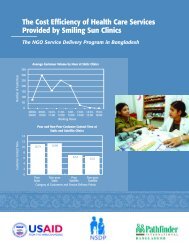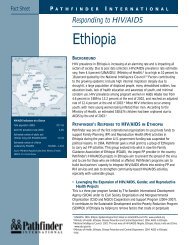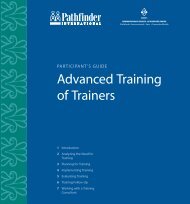reproductive health services for adolescents - Pathfinder International
reproductive health services for adolescents - Pathfinder International
reproductive health services for adolescents - Pathfinder International
Create successful ePaper yourself
Turn your PDF publications into a flip-book with our unique Google optimized e-Paper software.
Module 16/Introduction<br />
Specific Objective #2: Identify biological and psychosocial changes<br />
that occur during adolescence<br />
CONTENT<br />
Knowledge/Attitudes/Skills<br />
STAGES OF ADOLESCENT<br />
DEVELOPMENT<br />
Early Adolescence (10-13)<br />
• Onset of puberty and rapid growth<br />
• Impulsive, experimental behavior<br />
• Beginning to think abstractly<br />
• Adolescent’s sphere of influence<br />
extends beyond her/his own family<br />
• Increasing concern with image and<br />
acceptance by peers<br />
Middle Adolescence (14-16)<br />
• Continues physical growth and<br />
development<br />
• Starts to challenge rules and test<br />
limits<br />
• Develops more analytical skills;<br />
greater awareness of behavioral<br />
consequences<br />
• Strongly influenced by peers,<br />
especially on image and social<br />
behavior<br />
• Increasing interest in sex; special<br />
relationships begin with opposite sex<br />
• Greater willingness to assess own<br />
beliefs and consider others<br />
Late Adolescence (17-19)<br />
• Reaches physical and sexual<br />
maturity<br />
Training/Learning Methods<br />
(Time Required)<br />
TRAINER PRESENTATION (15 MIN.)<br />
The trainer should:<br />
• Use Transparency 1.1: Stages of<br />
Adolescent Development to briefly<br />
explain the stages of adolescence<br />
(early, middle, late), stressing that<br />
timing varies according to culture and<br />
individual development.<br />
1.1<br />
Ask Px, how can culture and<br />
opportunities affect timing and<br />
attainment of adolescent<br />
characteristics<br />
GROUP WORK (30 MIN.)<br />
The trainer should:<br />
• Divide Px into 2 groups:<br />
−<br />
−<br />
Group 1: physical and sexual<br />
changes during adolescence.<br />
Group 2: psychological and<br />
emotional changes during<br />
adolescence.<br />
• Ask both groups to discuss changes<br />
assigned to them and to list major<br />
changes on a flipchart.<br />
<strong>Pathfinder</strong> <strong>International</strong><br />
15<br />
Adolescent Curriculum


